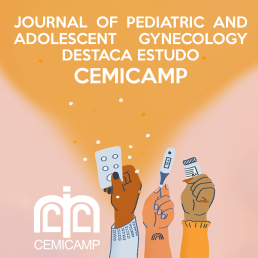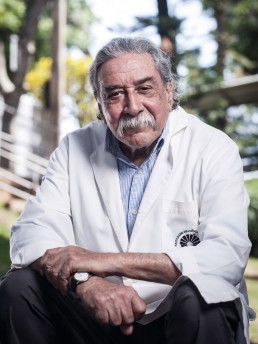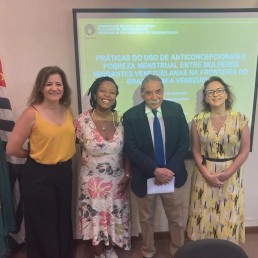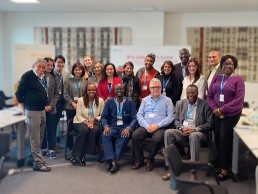FIGO Statement on the Recent Ban on Inducing Fetal Asystole for Legal Abortions in Brazil
In many countries around the world, women and girls who need to undergo abortions in advanced gestational stages face significant barriers to accessing safe services. These women and girls are among the most vulnerable, often subjected to increased stigmatization and persecution, and experience more severe complications and higher mortality rates when forced to resort to unsafe abortion practices.
Restrictive laws that deviate from the World Health Organization (WHO) recommendations against imposing deadlines, combined with a shortage of trained professionals, further exacerbate injustices against these individuals. In regions where legislation allows for the provision of safe abortion services in later stages of pregnancy, it is the ethical and professional duty of healthcare providers to advocate for access and quality, and to challenge any barriers that worsen existing structural factors.
In Brazil, induced abortion is legal under three circumstances: when the pregnancy results from rape, when there is a risk to the life of the pregnant person, and when there is a diagnosis of fetal anencephaly. In these three circumstances, there is no gestational age limit to access the right to a safe abortion according to Brazilian law. However, the Federal Council of Medicine of Brazil recently issued a resolution prohibiting the induction of fetal asystole for legally induced abortions, undermining these rights.
The Ban is Unethical and Contradicts Medical Evidence
FIGO expresses its deep concern over the recent resolution issued by the Federal Council of Medicine of Brazil that prohibits the induction of fetal asystole for legally induced abortions. This ban in Brazil is unethical and contradicts medical evidence.
For abortion procedures performed after 20 weeks of gestation, scientific evidence supports considering the induction of fetal asystole to prevent signs of life during a medical (induced) abortion or fetal expulsion after cervical preparation but before a planned dilation and evacuation (DE) procedure. The likelihood of transient neonatal survival after expulsion increases with gestational age and the interval between cervical preparation and the abortion. For medical abortion beyond the limit of viability, the induction of fetal asystole should always be an option.
The ban prevents access to quality abortion services for women with advanced (beyond viability) pregnancies who otherwise have the right to legal abortion in Brazil. The induction of fetal asystole in advanced induced abortions is an essential component of standard quality care and aligns with the intended outcome of the abortion, which is never a live birth.
The ban prevents obstetricians and gynecologists from adhering to the ethical principle of beneficence. It is well-established that safe induced abortion is safer than childbirth, even at advanced gestational ages. Terminating a pregnancy without inducing fetal asystole constitutes the induction of a premature live birth (which by definition is not an abortion). Without the induction of fetal asystole, abortions beyond the limit of viability become impossible to perform, forcing women to either continue the pregnancy and face the risks of full-term delivery and forced motherhood, or resort to very unsafe abortions. Thus, the ban violates women’s right to access and benefit from modern scientific technologies for a safe abortion.
The Ban Violates Ethical Principles
The ban contravenes the ethical principle of non-maleficence by potentially exposing the woman and the newborn to the harms of prematurity if advanced pregnancies are terminated without inducing fetal asystole. Terminating an advanced pregnancy without inducing fetal asystole could result in transient signs of life or even survival, with all the complications associated with prematurity (including respiratory distress, patent ductus arteriosus, severe intraventricular hemorrhage, necrotizing enterocolitis, late-onset sepsis, bronchopulmonary dysplasia requiring supplemental oxygen, and retinopathy). The induction of fetal asystole is therefore necessary to prevent avoidable risks to newborns and ensure non-maleficence, as well as to avoid legal implications for doctors who face caregiving obligations with neonates showing signs of life.
The ban indeed violates the prohibition of torture or other cruel, inhuman, or degrading treatment as established by the United Nations Human Rights Council. Banning the induction of fetal asystole could compel obstetricians and gynecologists to refuse to provide legally requested abortions due to their commitment to avoid causing harm to the newborn. Such refusal would constitute a violation of the pregnant person’s right to be free from torture or other cruel, inhuman, or degrading treatment or punishment.
The ban promotes the false assumption that studies on premature infants are applicable to aborted fetuses, using the rhetoric of viability. Viability is a medical concept relevant only to neonatal care and intensive care in the context of spontaneous or medically indicated preterm birth. It is not relevant to induced abortions. Even in applicable contexts, preterm birth is a last-resort measure in obstetrics, as any harm to the newborn, no matter how minimal, should be avoided. The studies on premature children cited in the resolution of the Federal Council of Medicine of Brazil pertain to inevitable preterm births and should not be generalized to aborted fetuses. This intentional misinterpretation also trivializes the risks associated with prematurity.
Impact on Public Health
The ban will negatively impact public health indicators by potentially falsely increasing neonatal and infant mortality and morbidity rates.
Ensuring Safe and Respectful Care
FIGO reiterates that the induction of fetal asystole should be considered and legally permitted as a therapeutic intervention to ensure a safe, medically induced abortion at advanced gestational stages when extrauterine viability is possible. This practice allows for care that respects the autonomy of the pregnant person and protects them from any harm. Banning fetal asystole—resulting in the risk of live births from legal abortion requests—undermines access to safe abortion care. In Brazil, it deprives healthcare professionals of the ability to advocate for the rights of women and girls as recognized by Brazilian legislation. This ban exacerbates social disparities and injustices: it sets a dangerous precedent for the entire region, threatening the significant advances made in this area in recent years.
References:
- World Health Organization (WHO). Clinical practice handbook for quality abortion care. Geneva: WHO, 2023. Available at: www.who.int/publications/i/item/9789240075207nbsp;
- World Health Organization (WHO), International Classification of Diseases 11th Revision (2022). The global standard for diagnostic health information. Available at: https://icd.who.int/browse11/lm/en#/http://id.who.int/icd/entity/151711…;
- Bartlett LA, et al. Risk factors for legal induced abortion-related mortality in the United States. Obstet Gynecol. 2004 Apr;103(4):729-37.
- CESCR. General Comment Nº 25: Science and economic, social and cultural rights. Article 15(1)(b), (2), (3) and (4) of the International Covenant on Economic, Social and Cultural Rights. United Nations, 2020 (UN Doc. E/C.12/GC/25).
- Stoll BJ, et al; Neonatal outcomes of extremely preterm infants from the NICHD Neonatal Research Network. Pediatrics. 2010 Sep;126(3):443-56.
- United Nations. General Council. Human Rights Council. A/HRC/22/53. Report of the Special Rapporteur on torture and other cruel, inhuman, or degrading treatment or punishment, Juan E. Méndez. Paragraphs 49 and 50.
- Nuffield Council of Bioethics. Critical care decisions in fetal and neonatal medicine: ethical issues. London: Nuffield Council of Bioethics, 2006.
- Romanis EC. Is 'viability' viable? Abortion, conceptual confusion and the law in England and Wales and the United States. J Law Biosci. 2020 Oct 9;7(1): lsaa059.
- Brumbaugh JE,et al. Outcomes of Extremely Preterm Infants With Birth Weight Less Than 400 g. JAMA Pediatr. 2019 May 1;173(5):434-445.
- Tyson JE, et al.; National Institute of Child Health and Human Development Neonatal Research Network. Intensive care for extreme prematurity--moving beyond gestational age. N Engl J Med. 2008 Apr 17;358(16):1672-81.
† Although the ban on the induction of fetal asystole by the Federal Council of Medicine is not a law in Brazil, it is valid nationwide for all Brazilian doctors. Since in Brazil legally induced abortions must only be performed by doctors according to the text of the law, the resolution published by the Federal Council of Medicine ultimately restricts medical practice concerning induced abortions.
‡ The concept of viability is variable and depends on the context and available technology.
Check the original article here.
Complete Series of the International Group on Access to Hormonal IUDs
For decades, the hormonal IUD has been an available option in high-income countries, providing an effective and convenient solution for family planning. However, there is still a horizon of possibilities to be explored for this contraceptive method. A recent video, available for viewing, features experts discussing the future of the hormonal IUD, addressing its potential and the challenges in making this option equitably accessible worldwide.
In the latest edition of the Hormonal IUD Access Group video series, which reflects on the long journey toward the global introduction of the hormonal IUD, renowned experts including Gathari Ndirangu Gichuhi, Tabitha Sripipatana, Laneta Dorflinger, Jim Sailer, and Dr. Luis Bahamondes discuss the next steps for expanding access to this technology. Dr. Luis Bahamondes, who is the president of CEMICAMP, has been a central figure in the discussions covered in the three videos of the series, contributing his extensive experience and knowledge in the field.
The videos highlight the importance of achieving equitable access to the hormonal IUD, a product that not only expands contraceptive options but also addresses heavy menstrual bleeding, combats iron deficiency, and improves the quality of life for millions of people around the world. With experts like Dr. Luis Bahamondes involved in these discussions, there is a clear focus on finding solutions that can be implemented across various socioeconomic realities, promoting a positive impact on global public health.
Dr. Luis Bahamondes's active participation in the discussions underscores the importance of continuous and informed dialogue on how to improve the distribution and acceptance of the hormonal IUD. His involvement in the three videos of the series reinforces the commitment of experts to finding ways for this technology to benefit as many people as possible, regardless of their location or economic condition.
Check out an excerpt from the discussion published on our Instagram:
For those interested in closely following these discussions and staying informed about advancements in the field, it is possible to subscribe to the HIUD Access Group newsletter through the website. Through this channel, subscribers can receive updates and information on new developments, initiatives, and events related to the hormonal IUD and its global impact.
In summary, the hormonal IUD represents a key piece in the puzzle of modern family planning, with the potential to transform lives. With dedicated experts like Dr. Luis Bahamondes leading the way, there is hope that broader and more equitable access will be achieved, allowing millions of people to benefit from this innovation in reproductive health.
Check out the complete series below:
Recrutamento para avaliação de novo tratamento para incontinência urinária no CAISM - UNICAMP
A incontinência urinária (vazamento acidental do xixi) é um problema de saúde bastante comum, principalmente entre mulheres.
Um dos tipos de perda urinária é aquele que acontece quando você sente uma urgência para fazer xixi, vai muitas vezes ao banheiro durante o dia, acorda muitas vezes à noite para urinar ou não consegue segurar a urina a tempo de chegar ao banheiro. Há diferentes tipos de tratamento para esse problema, como o uso de remédios e a realização de terapias com fisioterapeutas. Todos eles têm vantagens e desvantagens.
 Agora, médicas do Hospital da Mulher da Unicamp vão avaliar se o uso de um pequeno aparelho gerador de ondas (parecido com um ultrassom) pode ser um tratamento opcional adequado para o problema. Para responder a essa pergunta, será realizada uma pesquisa com 140 mulheres que sofram de incontinência urinária. As participantes têm que ter idade entre 45 e 65 anos. Além disso, não podem ter feito nenhum tratamento anterior para esse problema.
Agora, médicas do Hospital da Mulher da Unicamp vão avaliar se o uso de um pequeno aparelho gerador de ondas (parecido com um ultrassom) pode ser um tratamento opcional adequado para o problema. Para responder a essa pergunta, será realizada uma pesquisa com 140 mulheres que sofram de incontinência urinária. As participantes têm que ter idade entre 45 e 65 anos. Além disso, não podem ter feito nenhum tratamento anterior para esse problema.
Se ficou interessada e quer saber mais sobre essa pesquisa, entre em contato com a Dra. Juliana Fazzolari, do Hospital da Mulher da unicamp. Você pode falar com ela através do WhatsApp: (19) 99901-0108 e 97823-1272.
President of CEMICAMP Featured in the Book "Dialogues of the Future"
It is with great satisfaction that we announce the presence of the president of CEMICAMP in the newly released and inspiring book "Dialogues of the Future." This work is not just a literary compilation but a true invitation to immerse oneself in stories of extraordinary lives and discover the latent superpowers within each of us.
"Dialogues of the Future" brings together narratives that emphasize persistence, overcoming challenges, and courage. Each page offers a profound and inspiring view of how these elements shape our lives and propel us to achieve the extraordinary. The stories are engaging, full of emotions and lessons that captivate the reader from beginning to end.
Editorial of the Journal of Pediatric and Adolescent Gynecology Highlights Study Conducted at the Centro de Pesquisas em Saúde Reprodutiva de Campinas
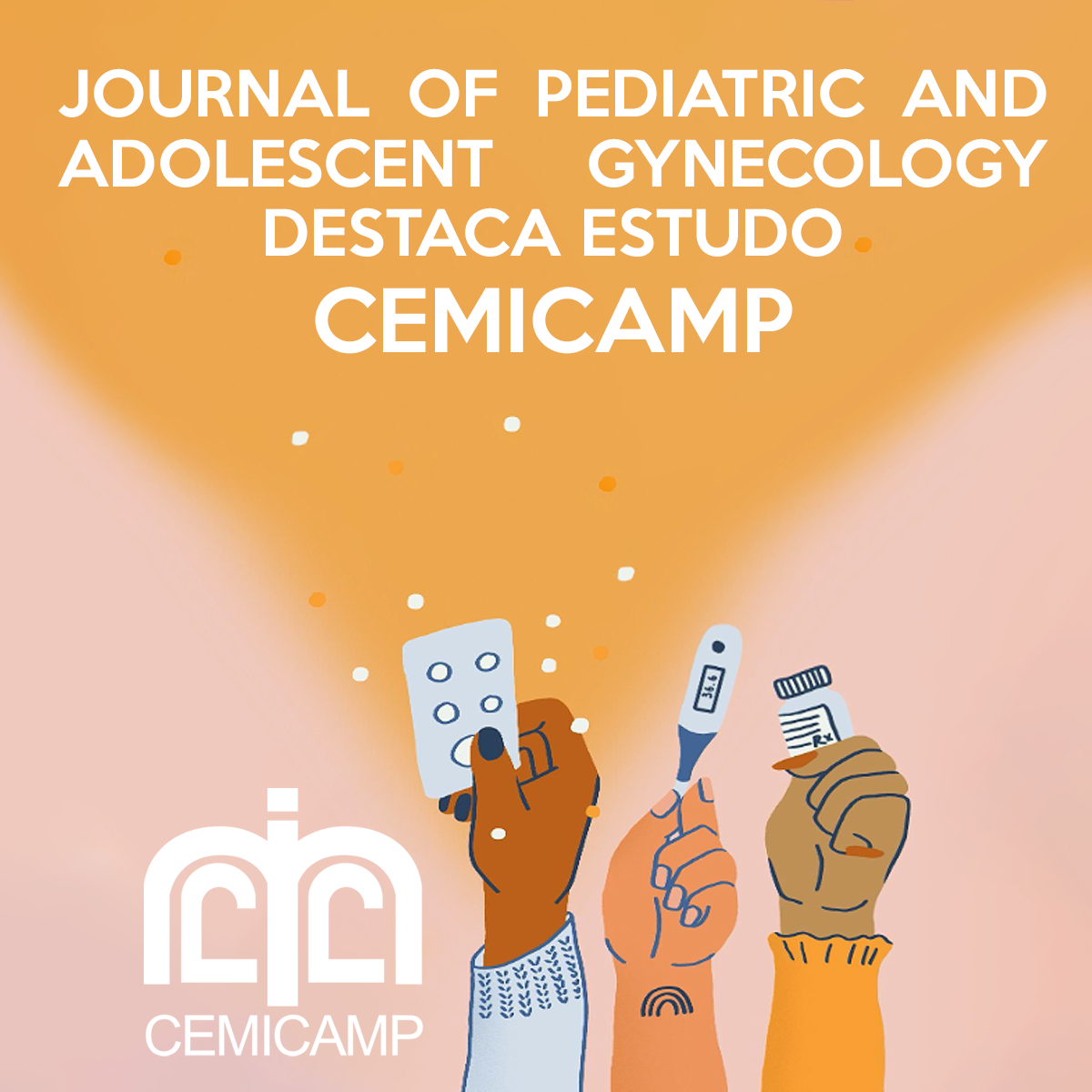
El editorial "Salud Sexual y Reproductiva en Estados Unidos, 2024: ¿Cómo votarás?" (traducción libre), de Paula J Adams Hillard MD (JPAG, Editora en Jefe), destaca la importancia crucial de las cuestiones relacionadas con la salud sexual y reproductiva en las elecciones de noviembre de 2024. Escrito después de las elecciones primarias en el estado de California, la autora enfatiza que, aunque algunas contiendas políticas aún están indefinidas, la elección para la presidencia no está tan reñida en gran parte del país, tanto para los candidatos demócratas como republicanos. La autora reconoce que la política puede ser un tema controvertido, incluso entre miembros de la misma familia, y que no todos asignan el mismo peso a todas las posiciones políticas de un candidato. Sin embargo, resalta que, en el contexto de las elecciones de 2024, la elección entre los candidatos es clara para quienes apoyan la salud sexual y reproductiva, la justicia reproductiva, así como el acceso a anticoncepción y aborto. Un punto clave abordado en el editorial es un estudio realizado en el Centro de Investigaciones en Salud Reproductiva de Campinas:
A recent study conducted by Bahamondes and colleagues in Brazil is shedding light on the efficacy and acceptance of intrauterine devices (IUDs) in adolescents. Recently published, the study is notable not only for its results but also for its innovative approach in an area of medicine that lacks randomized clinical trials: Pediatric and Adolescent Gynecology (PAG).
The study evaluated clinical performance, bleeding patterns, dysmenorrhea, and patient satisfaction with three types of IUDs: the copper IUD, the 52 mg levonorgestrel IUD, and the 19.5 mg levonorgestrel IUD in adolescents, with an average age of 17.9 years, 80.8% of whom were nulliparous. The results, although somewhat expected, provide valuable insights due to the randomized design of the study.
One of the main findings was the high continuation rate of all IUDs, which was 83%. However, continuation was slightly lower with the copper IUD compared to the hormonal IUDs. Additionally, the expulsion rate was higher for the copper IUDs, with 14.9 expulsions per 100 woman-years. The hormonal IUDs also showed advantages regarding menstrual bleeding and dysmenorrhea, with a significantly lower proportion of adolescents reporting these symptoms compared to the copper IUD.
A notable point was the high patient satisfaction rate, with an impressive 97.8% in the group receiving the highest dose of levonorgestrel. This suggests that, despite concerns or doubts some may have about the use of IUDs in adolescents, the vast majority are satisfied with their contraceptive choice.
or healthcare professionals and reproductive health advocates, this study provides strong support for the use of IUDs in adolescents, including those who have never been pregnant. Its significance extends beyond the Brazilian context, having global implications, especially at a time when access to safe and effective contraception is crucial for adolescent health.
While there are still challenges to address, such as education on contraception and access to healthcare services, the results of this study are a significant step in the right direction. They highlight the importance of evidence-based approaches in promoting adolescent sexual and reproductive health worldwide. With further research and increased awareness, we can continue to advance in protecting the reproductive rights of young women.
President of CEMICAMP, Luis Guillermo Bahamondes, Gives Interview to Pesquisa FAPESP
The President of CEMICAMP, Luis Guillermo Bahamondes, Gave an Interview to Pesquisa FAPESP. 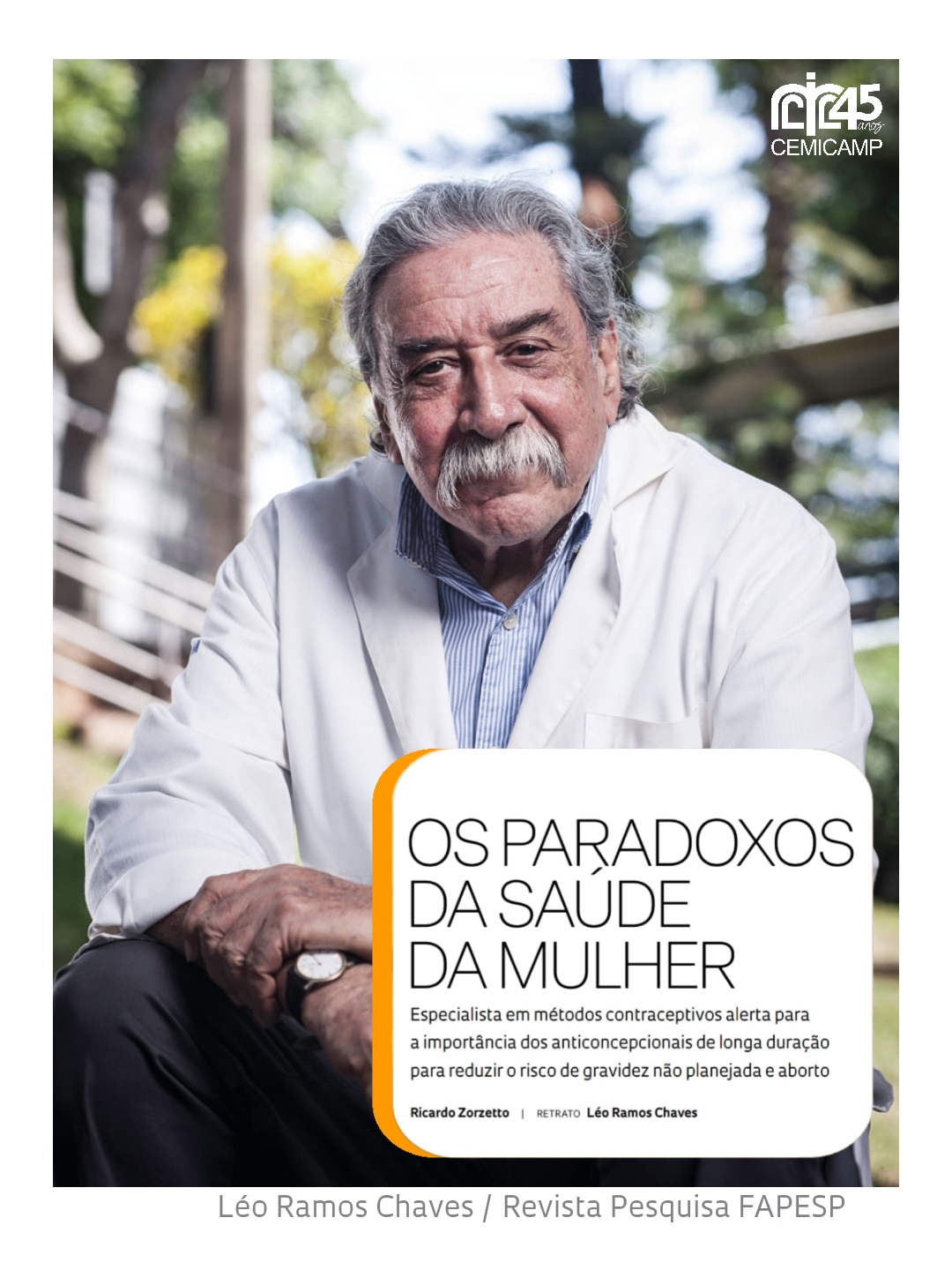 Check out an excerpt below, and the full text at the link:
Check out an excerpt below, and the full text at the link:
"Women, both in Brazil and globally, face four major issues: lack of access to contraceptive methods and care during pregnancy, childbirth, and the postpartum period, as well as inadequate care after menopause and for abnormal uterine bleeding. Much needs to be done to address these needs, and significant savings could be achieved with adjustments in public health policies. In 2014, we published an article showing the cost to the Brazilian public sector for each pregnancy, including prenatal exams and consultations, childbirth, and postpartum follow-up.[os 40 dias após o parto] The total came to $1,000, about R$5,000. It's very expensive. If women who do not wish to become pregnant used an IUD or [dispositivo intrauterino]hormonal implant, long-acting contraceptive methods, the cost to the state would be less than R$1,000. We have tried for years to influence policymakers. We sent each publication from our group with significance for the public sector to the Health Secretaries of Campinas and the state of São Paulo, and to the Minister of Health, with a message: 'Look at this.' Do you know how many times we received a response? None, not even an acknowledgment of receipt..."
Full text:: https://revistapesquisa.fapesp.br/luis-bahamondes-os-paradoxos-da-saude-da-mulher/
Dr. Montas Laporte is awarded a fellowship from the UNICAMP Postdoctoral Researcher Program.
 Dr. Montas Laporte has been awarded a fellowship from the UNICAMP Postdoctoral Researcher Program - Deliberation of Congregation No. 471/2023 of the Faculty of Medical Sciences of the State University of Campinas (UNICAMP). Congratulations, Montas, on the achievement!
Dr. Montas Laporte has been awarded a fellowship from the UNICAMP Postdoctoral Researcher Program - Deliberation of Congregation No. 471/2023 of the Faculty of Medical Sciences of the State University of Campinas (UNICAMP). Congratulations, Montas, on the achievement!
Student Leila Rodrigues Rocha defends her thesis on Menstrual Poverty.
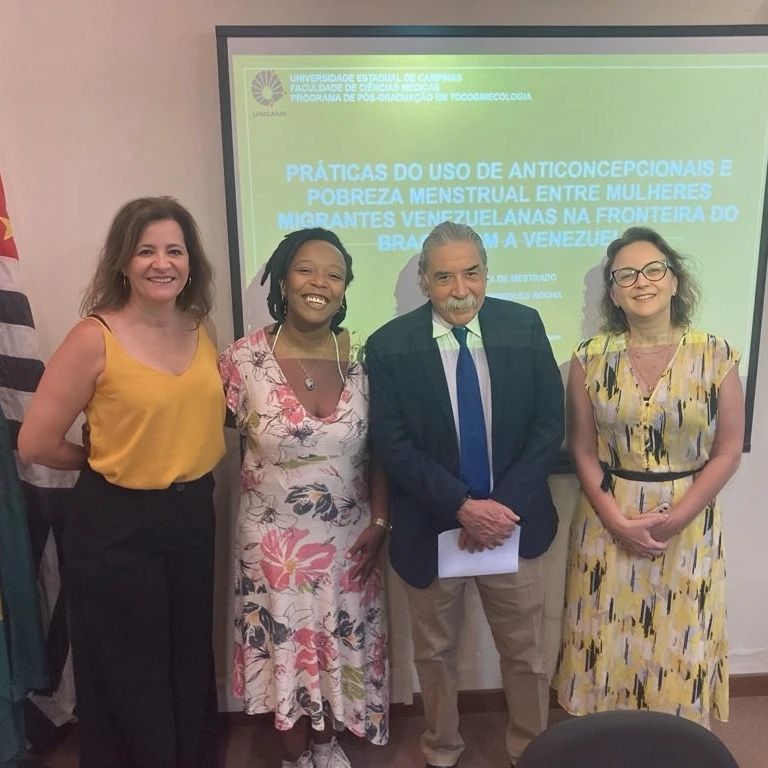 Today, 12/07/2023, master’s student Leila Rodrigues Rocha defended her thesis titled "CONTRACEPTIVE USE PRACTICES AND MENSTRUAL POVERTY AMONG VENEZUELAN MIGRANT WOMEN AT THE BRAZIL-VENEZUELA BORDER," under the supervision of Prof. Dr. Luis Guillermo Bahamondes.
Today, 12/07/2023, master’s student Leila Rodrigues Rocha defended her thesis titled "CONTRACEPTIVE USE PRACTICES AND MENSTRUAL POVERTY AMONG VENEZUELAN MIGRANT WOMEN AT THE BRAZIL-VENEZUELA BORDER," under the supervision of Prof. Dr. Luis Guillermo Bahamondes.
The President of CEMICAMP receives an award for his prominence in the researchers' ranking.
The Faculty of Medicine paid an emotional tribute to the faculty members who excelled in the most recent research ranking, receiving institutional recognition for their exceptional technical ability in generating knowledge at outstanding levels. The renowned publisher Elsevier revealed a ranking that highlights the quality and impact of the academic output of the faculty members, resulting in the well-deserved recognition by the institution. Among the honored researchers was the president of CEMICAMP, Dr. Luis Bahamondes.
At this significant event, the professors were celebrated for their tireless dedication to research, demonstrating excellence in generating knowledge that positively impacts the academic community and society at large. The tribute reflects not only the importance of institutional recognition but also the pride of the Faculty of Medicine in having such notable and committed professionals in its faculty, dedicated to innovation and scientific excellence.
Watch the video by clicking here.
Reunión del HUB OMS de la HRP Alliance for Research Capacity Strengthening
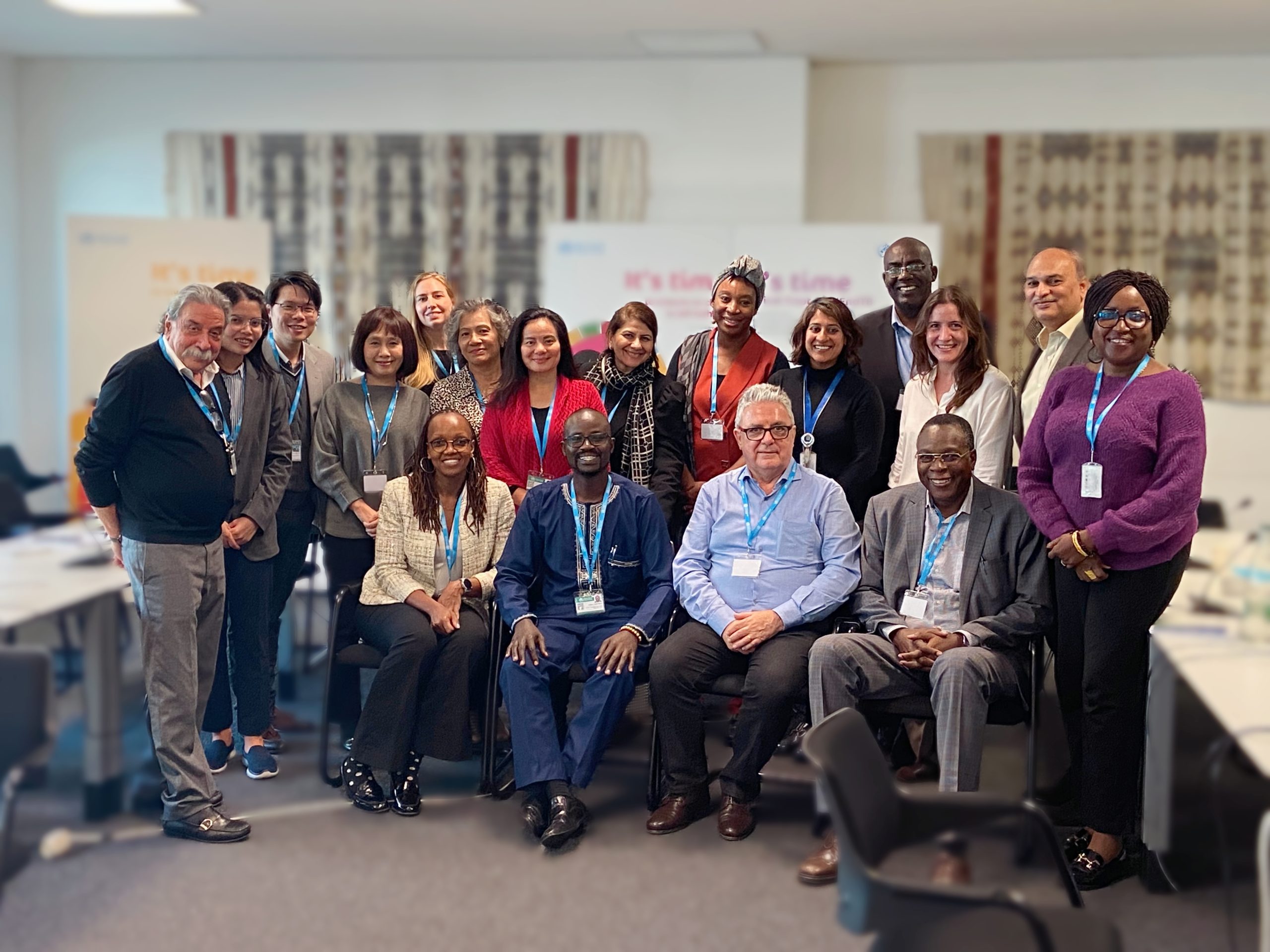
El presidente de CEMICAMP, Dr. Luis Bahamondes, y el Profesor Dr. José Guilherme Cecatti participaron en la reunión de la HRP Alliance for Research Capacity Strengthening, que involucra a los siete centros del programa HUB de la OMS. En esta reunión, se hizo un enfoque claro en la necesidad de redefinir la comprensión convencional de la salud sexual. Se cuestionó el enfoque tradicional, que se centra principalmente en la salud reproductiva y materna, y se reconoció que esto debe abarcar el bienestar general de los cuerpos y las mentes a lo largo de sus vidas, incluyendo la consideración del sexo y género en todos los aspectos de las enfermedades y tratamientos. Además, la reunión promovió ideas audaces que se alinean con las oportunidades mapeadas, con el objetivo de mejorar el financiamiento y los recursos destinados a la investigación y el desarrollo en salud sexual. Se destacó la importancia de demostrar la eficacia de las inversiones en investigaciones, con el fin de impulsar avances significativos en esta área.








